News
30 December 2024
Improving growing conditions as a piece of the urban water management puzzle
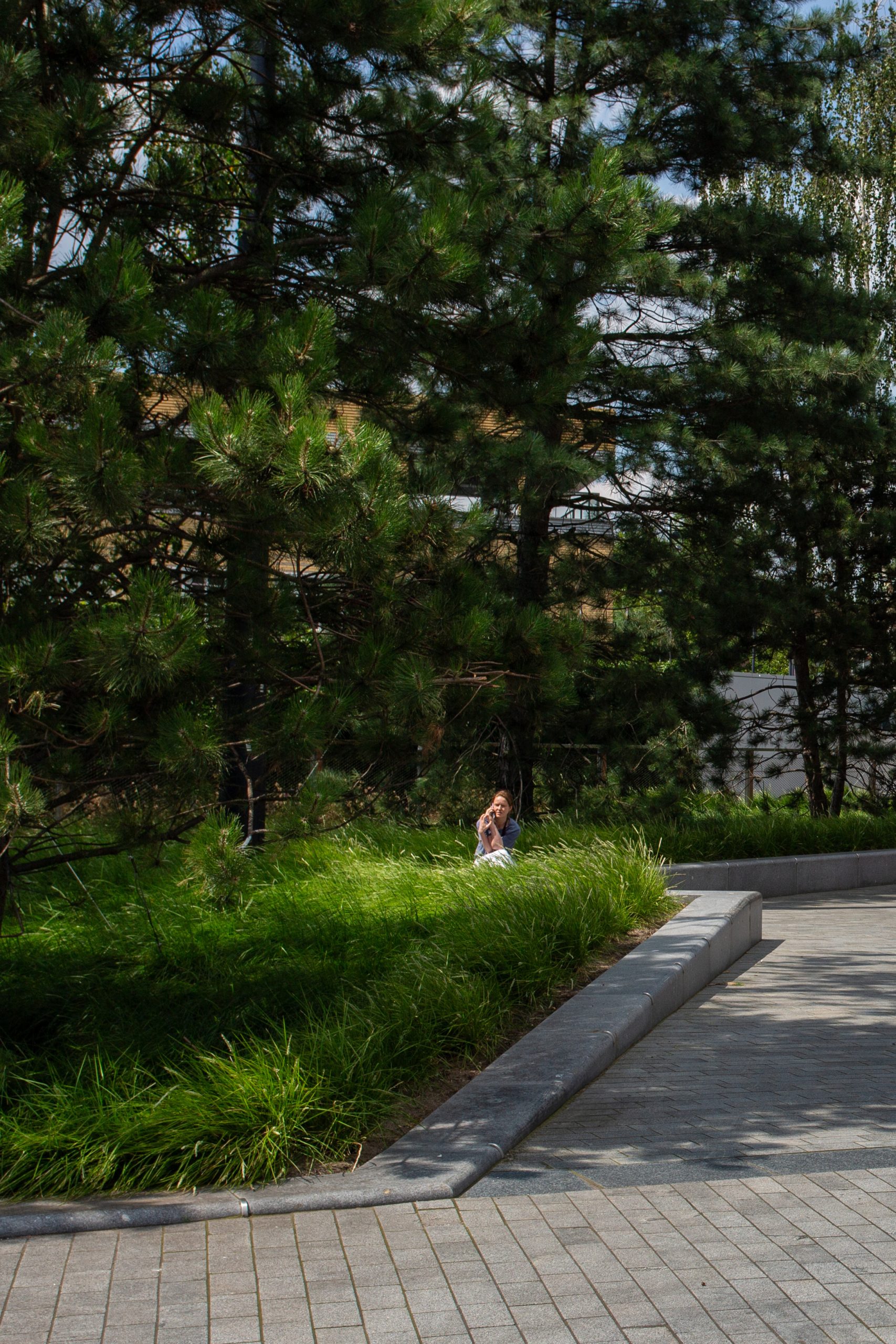
Article in trade magazine Boomzorg
How far does the world of growing condition improvement extend? Much further than just the roots of trees, says Geert-Jan Derksen, technical specialist in innovation, sustainability, and advisory (IDeA) at Joosten Groep. Improving growing conditions is a crucial part of a bigger challenge: water management in urban areas. “Enhancing growing conditions in hardened environments is just one piece of the puzzle,” Derksen explains. This article is therefore not only about improving growing conditions but about the future of water management—a topic that is becoming increasingly urgent. “If we do nothing about our water management now, the consequences for urban areas will be unimaginable.”
‘It’s about transforming greenery into a functional system’
The impact of water management on urban life is becoming increasingly visible. With rising weather extremes such as heavy rainfall and prolonged droughts, the need for smart solutions grows stronger. “Improving growing conditions is crucial in this, but it’s only part of the solution,” emphasizes Derksen. “Trees play an important role in the city. They not only help to green the environment but also contribute to better water drainage and reducing heat stress.” According to Derksen, the key lies in an integrated approach: “When water management and growing condition improvement are well coordinated, we can make urban areas much more resilient for the future.”
A bridge between greenery and civil engineering
The foundation of good growing condition design lies in finding a balance between the interests of green space managers and civil engineering experts. “In urban areas, planting a tree is much more complex,” explains Derksen. “You have to build a bridge between green specialists, who prioritize the tree’s health, and civil engineering specialists, who focus on the strength and safety of the surface.” These two worlds often have opposing interests. “It’s about creating a living environment where the tree can grow optimally without compromising the technical requirements of the city.”
“When water management and growing condition improvement are well coordinated, we can make urban areas much more resilient for the future.”
The approach to improving growing conditions has evolved tremendously over recent decades. “We are now much more aware of the value of trees in the city. A well-designed growing site makes a big difference to the lifespan of a tree.” With the RootSpace system from the British manufacturer GreenBlue Urban, Joosten Groep offers a modular solution of plastic frames that create optimal growth conditions for trees. “The system ensures that tree roots have enough space to grow without damaging the civil engineering structure of the environment. You can even drive heavy traffic over it without harming the tree,” says Derksen. Underneath this structure, an AquaMulti Box is installed, a system where water infiltrates and is buffered. Through a capillary system, water is transported directly to the tree. “This ensures the tree has constant access to water, which is especially crucial in the first years for healthy development.”
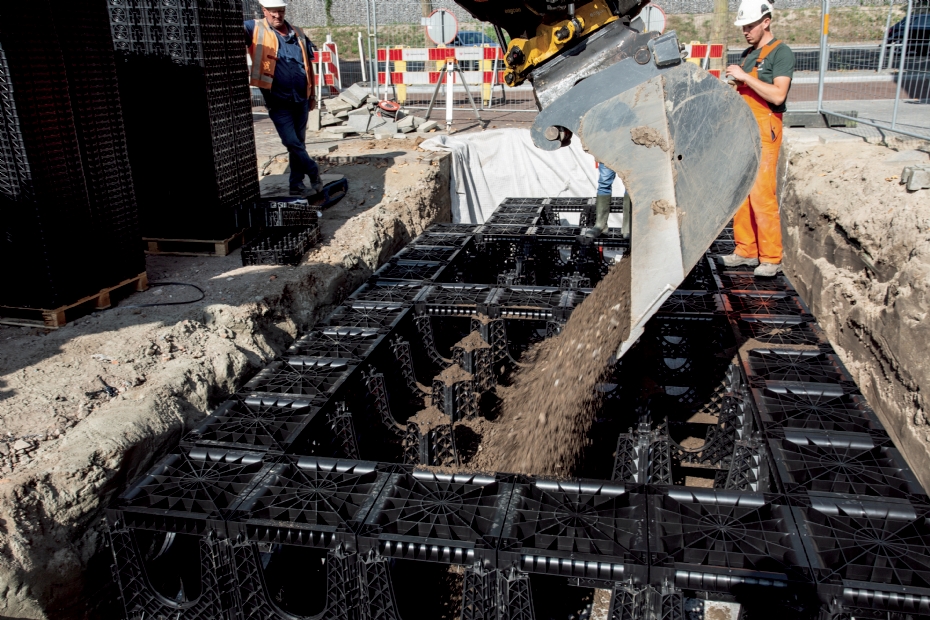
The RootSpace system is a modular solution of plastic frames that provides optimal growing conditions for trees.
Following the raindrop principle
And here the bigger puzzle of the water management system comes into play. The tree’s growing site with the AquaMulti Box plays an essential role. “Follow the raindrop principle,” explains Derksen. “We want to retain the raindrop where it falls — for example, on the roof. This can be done with plastic crate systems, but we also use a lot of green roofs, which capture about half of the rainwater.” From there, the water flows to green walls and eventually ends up in the tree’s growing site or planting beds. “We don’t just see a tree as a tree, but also as a water management system. A single tree can temporarily store up to three cubic meters of water,” says Derksen. “Our system ensures the tree can grow optimally while simultaneously integrating water management concepts into growing site improvement. This creates an autonomous network in a street or neighborhood where water is collected and used efficiently.”
“An autonomous network forms in a street or neighborhood where water is captured and used efficiently.”
This construction prevents valuable rainwater from being drained away to the sewer through street drains. This solves several major problems that we are likely to face more frequently in the future, Derksen states. “By increasing the water retention capacity in the growing site, you ensure that water is sufficiently captured even during extreme peak showers. The role of trees and plants will increasingly become a necessity rather than a luxury. Secondly, the water ends up where it belongs—in the soil—instead of in the sewer. This addresses problems like declining groundwater levels, soil subsidence, and drinking water shortages.”
Holistic approach
This holistic vision on water management makes Joosten Groep a unique player in the Dutch market. “I don’t know any other party offering such an integrated system.” There are countless opportunities to implement smart and autonomous water management systems using sensors and monitoring technologies. “We continuously research the moisture and other growth conditions of trees and are happy to share this knowledge with professionals, such as universities.” In the future, artificial intelligence (AI) will even make self-managing water systems possible.
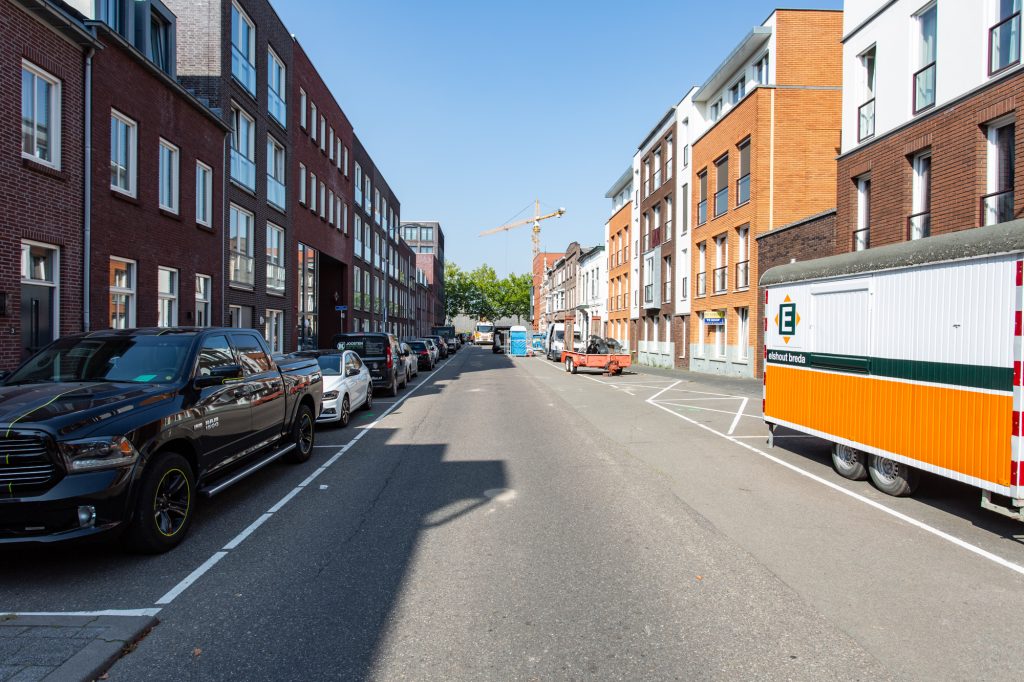
After: Greener street in Breda with growing site improvement
Alongside technical innovations, Derksen sees an important role for greenery in developing a future-proof city. “You can use plants much more purposefully for a specific goal,” he explains. “For example, nitrogen-loving plants near traffic lights not only contribute to the city’s green appearance but also help capture fine dust and nitrogen. It’s about transforming greenery into a functional system. After all, plants provide oxygen, cooling, and water retention. This isn’t a high-tech solution, but common sense backed by scientific evidence.”
Author: Fleur Dil – uitgeverij NWST
Meer nieuws
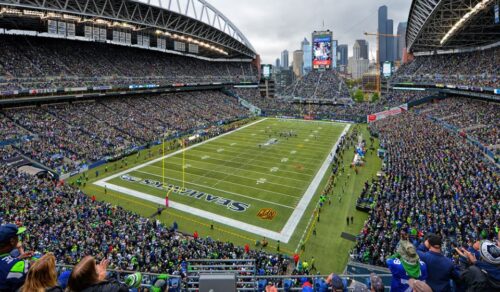
13 November 2025
Joosten is participating in the 2026 World Cup
Joosten has landed a special assignment: we are going to provide the perfect pitches for the 2026 Fo
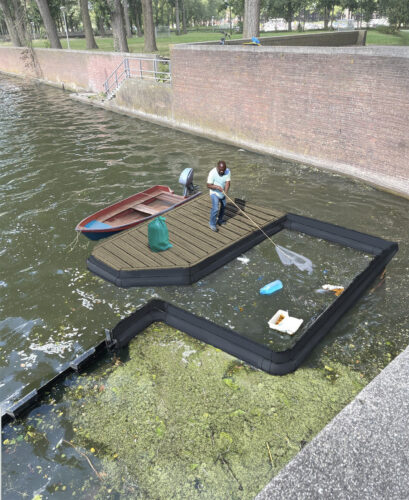
12 November 2025
Rethinking the Shoreliner
For his graduation research at Wageningen University & Research, student Mike Cleintuar followed the
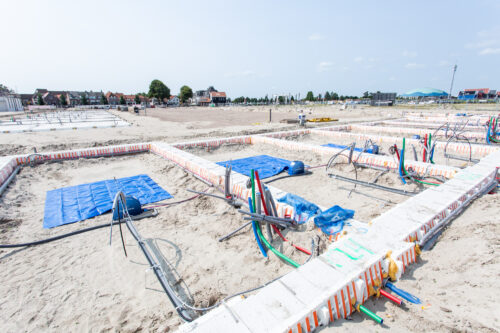
8 October 2025
JustNimbus: finalist for the Cobouw Innovation Award
Every year, the Cobouw Awards are presented. Their purpose is to reward inspiring frontrunners and s